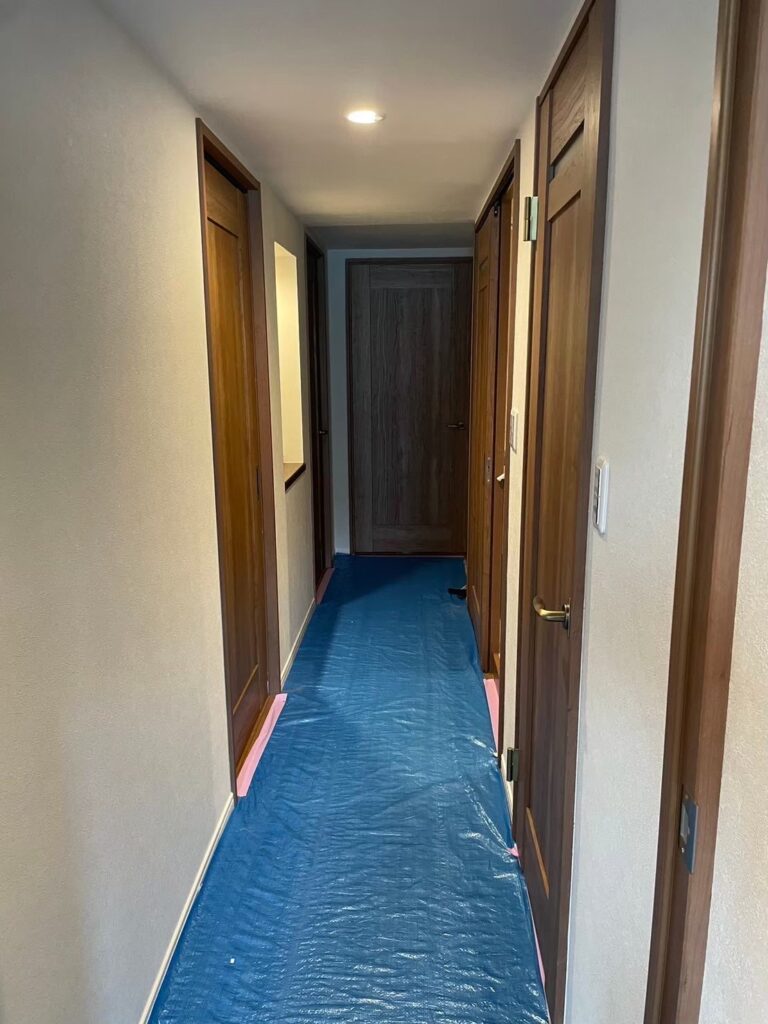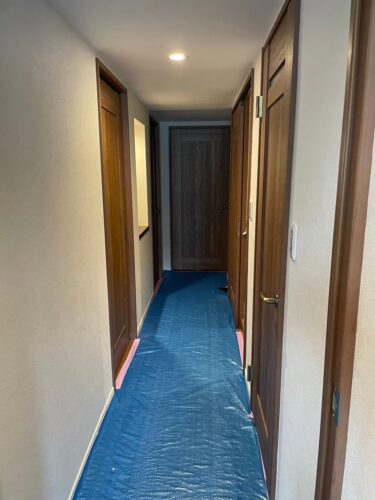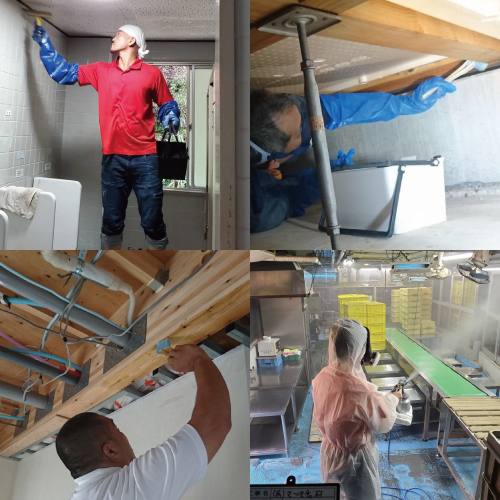Mold damage is becoming a serious problem in diplomatic facilities, including embassies and consulates, and housing for international organizations in Japan and overseas. High humidity and old building structures are the causes, and it is affecting the health of staff and the aesthetics of the buildings. In this article, an expert will clearly explain the causes of mold, safe removal methods, and specific methods for preventing recurrence. By reading this article, facility managers and administrators will be able to clearly understand the countermeasures they can take immediately and how to choose a reputable contractor, which will lead to the creation of a diplomatic facility environment that can be used with peace of mind.
1. Background of Mold Issues in Embassies and Consulates
Embassies and consulates, symbols of national representation, often face hidden threats from mold. These facilities, both in Japan and abroad, are often housed in older buildings where ventilation and humidity control may be insufficient. Additionally, many of these structures were not designed for the specific climate in which they’re located. In hot and humid regions, mold becomes a serious and escalating problem.
1-1. Environmental Risks from High Humidity and Condensation
Many embassies and consulates are located in regions with high year-round humidity. During the rainy or monsoon seasons, indoor humidity can spike, leading to condensation on walls, furniture, and ceilings. If this moisture is not dried and continues to accumulate, it creates an ideal environment for mold growth. Basements, storage rooms, and poorly ventilated meeting rooms are particularly at risk due to trapped air and stagnant moisture.
Mold thrives in conditions of 25–30°C and over 60% humidity — similar to the temperatures considered comfortable for humans. Ironically, embassies and consulates maintain these exact conditions year-round, unintentionally creating ideal breeding grounds for mold.
1-2. Impact of Aged Structures and Poor Ventilation
Many diplomatic facilities are historic or architecturally significant buildings with outdated construction methods. These buildings often lack modern insulation or vapor barriers, making them susceptible to condensation caused by temperature differences between indoors and outdoors. Additionally, older ventilation designs may result in poorly placed or limited windows, and insufficient natural airflow.
In places like Japan, where seasonal climate changes include prolonged wet periods like the rainy season, trapped humidity becomes a constant problem. Modern buildings may have 24-hour ventilation systems or advanced dehumidification, but older embassies often lack these features. Thus, frequent inspections and proactive measures are essential to maintaining healthy conditions.
2. Impact of Mold on Diplomatic Facilities
Mold is not merely a cosmetic issue — it poses serious health and reputational risks, especially in high-profile diplomatic facilities. The presence of mold can harm the health of personnel and visitors, degrade the structure’s appearance, and even compromise diplomatic credibility.
2-1. Health Risks for Staff and Visitors
Mold spores floating in the air can trigger allergic reactions, respiratory problems, and other illnesses, particularly in those with asthma, rhinitis, or weakened immune systems. International visitors unfamiliar with Japan’s humidity may be especially susceptible. Since embassies host numerous guests and staff, maintaining a healthy air environment is essential.
If guests begin to experience symptoms like coughing, sneezing, or itchy eyes, it may cast doubt on the facility’s safety and management. To preserve the reliability and public image of the institution, immediate and thorough mold countermeasures are crucial.
2-2. Damage to Building Aesthetics, Structure, and Trust
Visible mold on walls and ceilings damages the visual impression of a space, potentially undermining the credibility of the embassy or consulate. Mold can also penetrate wood, stone, and fabrics, leading to decay and structural damage. In some cases, entire sections of buildings or furnishings must be replaced, resulting in high costs.
As mold quietly spreads through walls and ceilings, unnoticed problems may escalate into major repair projects. If structural beams or critical materials are affected, this could lead to expensive renovations and even budgetary strain for diplomatic operations.
3. Unique Mold Challenges in International Organization Housing
Housing managed by international organizations poses unique mold-related issues due to its multicultural residential makeup and specific institutional requirements. Addressing these issues requires understanding of the environmental, social, and cultural aspects that influence how mold is handled and prevented.
3-1. Mold Risks in Multinational Residential Environments
In many cases, staff residences under international organizations are shared by families from multiple countries, each with different habits and understanding of mold risks. Some residents may come from dry climates and be unaware of the importance of ventilation or humidity control in more humid regions.
Additionally, the shared nature of these facilities means that poor management or neglect in one unit can impact neighboring residences. Kitchens, bathrooms, and laundry areas — all sources of moisture — can become breeding grounds for mold if not managed consistently across the building.
3-2. Cultural Differences and Health Awareness Gaps
Cultural perceptions of cleanliness and health vary across regions. Some cultures may treat mold as merely a cosmetic issue, while others may view it as a severe health threat. This difference can result in inconsistent reporting, delayed responses, and ineffective communal management in international housing.
Moreover, language barriers or differing expectations regarding maintenance responsibility between tenants and facility managers can hinder proper communication and delay necessary action. Raising awareness through multilingual education and standardized hygiene protocols is key to preventing mold-related health problems in such diverse settings.
4. Effective Mold Inspection and Diagnosis Methods
In diplomatic and international housing, missing early signs of mold can lead to serious health and structural risks. Early detection and accurate diagnosis are the foundation of mold prevention and remediation. This section outlines basic on-site inspection methods and more advanced professional diagnostic techniques.
4-1. Visual Checks and Environmental Measurements
The most fundamental step in mold detection is visual inspection. Focus should be on walls, ceilings, under floors, and around air conditioning vents—areas prone to moisture. Mold may appear in black, green, or white patches and can sometimes resemble stains. Musty odors and dampness behind furniture are also key indicators.
In addition, monitoring temperature and humidity is essential. If indoor humidity consistently exceeds 60%, mold is likely to develop. Using hygrometers in multiple rooms allows staff to observe humidity changes over time, revealing high-risk environments.
These basic observations and measurements help identify mold-prone zones and form the basis for preventive or remedial action.
4-2. Fungal Testing and Professional Evaluation
For mold that isn’t visible or when risk is suspected, professional testing is necessary. Experts can collect air samples to analyze spore concentrations or use specialized tools to assess mold infiltration behind walls or beneath flooring.
Devices like air samplers identify the types and quantities of airborne spores, providing insights into invisible air contamination. Infrared cameras and microscopes can detect moisture buildup and internal mold without damaging building materials.
These evaluations reveal root causes that DIY cleaning can’t address and provide accurate data for planning thorough removal and prevention strategies.
5. Comparison of Mold Removal Techniques by Experts
In high-stakes facilities such as embassies or international residences, safety and thoroughness are non-negotiable. Here, we compare over-the-counter mold removers and professional solutions, focusing particularly on the advanced MIST Method®.
5-1. Consumer Products vs. Professional Techniques (e.g., MIST Method®)
Commercial mold removers are convenient but usually only effective on the surface. They often contain strong chemicals that can damage sensitive materials or cause health issues if used improperly. This makes them unsuitable for diplomatic buildings that often use natural wood, stone, or historic materials.
In contrast, professional methods like the MIST Method® adapt the strength of the cleaning agent to the infestation and apply it as a fine mist. This mist penetrates deeply and kills mold at the root. There’s no need for scrubbing or sanding, which means delicate materials stay intact.
5-2. Choosing Materials- and Health-Safe Techniques
In diplomatic and international settings, preserving both health and historical aesthetics is vital. The MIST Method® uses a specially formulated solution tested for safety, making it appropriate for environments with children, elderly residents, or sensitive users.
The treatment leaves little residue, and areas can be reoccupied quickly after simple ventilation. The pH-adjustable formula adapts to materials, avoiding discoloration or degradation. This makes it ideal for preserving valuable surfaces while eliminating mold.
6. Mold Removal and Safety with the MIST Method®
Diplomatic and international facilities need more than basic cleaning—they require a safe, effective, and non-damaging solution to remove mold entirely. The MIST Method® was developed to meet these demands. This chapter explains its features and safety credentials.
6-1. Non-Abrasive, Non-Invasive Technology
Unlike traditional cleaning methods that require scrubbing or sanding, the MIST Method® disperses a mist of special solution that seeps into the depth of the material to kill mold roots. It provides even coverage across wide surfaces including ceilings, beams, and corners.
Especially for sensitive surfaces like wood, stone, and plaster, conventional techniques risk damage. The MIST Method® avoids this by delivering uniform results while preserving the texture and value of the material.
6-2. Environmentally and Human-Safe Agents
The agents used in the MIST Method® are verified through rigorous safety testing and contain minimal harmful ingredients. This makes them safe for use in spaces frequented by diplomats’ families, children, and seniors.
Additionally, the agents decompose naturally and leave minimal residue. With proper ventilation, rooms can be quickly returned to service. The method also improves air quality by targeting airborne mold spores, offering comprehensive indoor sanitation.
This balance of safety and effectiveness makes the MIST Method® ideal for sensitive institutional environments.
7. Prevention Strategies and Maintenance Systems
True mold control is not just about removing visible mold—it’s about ensuring it doesn’t return. Facilities like embassies require continuous air quality management to remain healthy. Here are proven prevention and maintenance practices.
7-1. Ventilation, Dehumidification, and Routine Monitoring
Humidity control is critical. Maintaining indoor humidity between 40–60% helps prevent mold growth. This requires a mix of consistent ventilation and dehumidification. For high-sealed embassy buildings, installing 24-hour ventilation systems or dedicated dehumidifiers is key.
Humidity spikes during rainy or stormy seasons should be closely tracked using multiple hygrometers across rooms. Periodic inspections of interior spaces, including walls and crawlspaces, help catch moisture buildup before mold develops.
7-2. Anti-Mold Coatings and Long-Term Monitoring
Preventive treatments after mold removal play a central role in long-term control. The MIST Method® includes anti-mold coatings that create a protective barrier, blocking spore settlement and reproduction.
Additionally, facilities should monitor air spore levels and humidity every 6–12 months. By establishing a regular testing and evaluation schedule, potential risks can be mitigated early.
In diplomatic settings, proactive planning and ongoing management are essential to ensuring the cleanliness, safety, and functionality of buildings.
Mold removal and mold prevention at Mold Busters Osaka and Mold Removal Reform Tokyo and Nagoya The mold problem in diplomatic facilities and international organization housing is a serious issue that directly affects the reliability of the facilities and the health of the users. In such a situation, if you are looking for reliable and safe mold removal and recurrence prevention measures, please contact us at “Mold Busters Osaka” and “Mold Removal Reform Tokyo and Nagoya”. All of these brands are specialized services developed by Taiko Kenso Co., Ltd. and are available in a wide range of areas including Kansai, Kanto, and Chubu. Thoroughly remove mold safely without damaging the material with the MIST method® The “MIST method®” we use is a unique technology that uses a mist-like special agent to penetrate and remove mold to the roots without rubbing or scraping. This method eradicates mold without damaging the building material and leaves the beauty and structure intact. In addition, we use chemicals that are safe, so it is safe even in environments where there are families of diplomats and elderly people. In addition, by applying an anti-mold coating after construction, we can prevent recurrence for a long time. By wrapping up mold spores that have penetrated deep into the material and dealing with mold floating in the air, we keep the entire facility clean. Taiko Kenso’s strength is that we can handle mold removal and renovation all at once. Many mold removal companies focus only on “removing mold”, but we at Taiko Kenso are different. We are also professionals in architectural renovation, and are one of the few companies that can handle not only mold removal, but also the subsequent “renovation and repair work”. We can consistently handle the replacement and repair of walls, ceilings, and floors damaged by mold, as well as moisture prevention, insulation, and ventilation measures. There is no need to go to the trouble of asking for a separate contractor, and we can achieve an efficient and uniform finish. About Taiko Kenso’s renovation business Taiko Kenso provides high-quality renovations for a wide range of buildings, including homes, facilities, condominiums, and stores. We are particularly strong in the following areas: Interior renovations: Renewal of interiors, wallpaper, flooring, and fixtures, etc. Water-related renovations: Replacement and comfort of equipment in kitchens, bathrooms, toilets, washrooms, etc. Exterior and roof renovations: Durability improvement work such as exterior wall painting, waterproofing work, and roof replacement Insulation and moisture-proof renovations: Installation of insulation materials in conjunction with mold prevention measures and introduction of moisture-regulating wall materials Barrier-free and elderly-friendly renovations: Work that takes safety into consideration, such as installing handrails and eliminating steps We are also good at renovations that are based on the premise of “combining dignity and functionality” required in special environments such as diplomatic facilities and housing for international organizations, and we provide a consistent service from design to construction and after-sales service.





